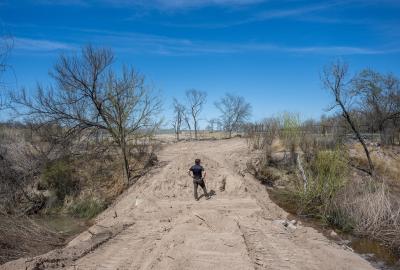On thin ice: Climate change is putting the future of hockey at risk. Players are on defense.
It was supposed to be a festival — a full-throated celebration of pond hockey. That’s the pickup version of the winter sport that kids start out playing on local ponds and outdoor rinks, in somebody’s brother’s old skates. It’s a sport adults love for the sheer joy of frolicking outdoors with friends in biting temperatures.

The U.S. Pond Hockey Championships, slated for Minneapolis’ Lake Nokomis this January, brought together more than 300 recreational teams from around the country to skate hard and goof around. To kick back with the occasional beer, and most importantly, play the game “the way nature intended.”
But the polar vortex that for the first time this winter finally froze the lake’s surface into a solid black slab, relented much too soon. By the end of the first full week of competition, the ice had become what could only be called “sloppy,” with puddles on the surface and worryingly thin.
“This winter season has been like no other we can remember,” the tournament wrote on Facebook, canceling the final weekend of play, and with it, the championship itself.
About 10 miles away, in North Minneapolis, pediatrician Chris Williams was contemplating his backyard rink.
Earlier this winter, like perhaps hundreds of thousands of North American residents — there are actually no statistics on how many people do this — Williams and his kids leveled his small yard using 80 bags of playground sand. They put down a huge tarp and short side rails, filled the enclosure with water and hoped for a solid freeze. Minnesota, after all, has been known for its brutal winters.
Williams grew up playing outdoor hockey in this same neighborhood in the 1970s.
“When you get outdoors and skate,” he says, “it’s beautiful. Imagine a bright sunny day, a clear blue sky, the light reflecting off the snow. It’s in my soul.” He wanted to give that to his kids — that sheer joy. That sense of being unconfined by the elements.
But this year’s weather has been no friend to skaters. The rink finally froze when the polar vortex hit in January but melted a week later, and was left looking more like a soggy sandbox than a place to practice some basic shots in the crease.
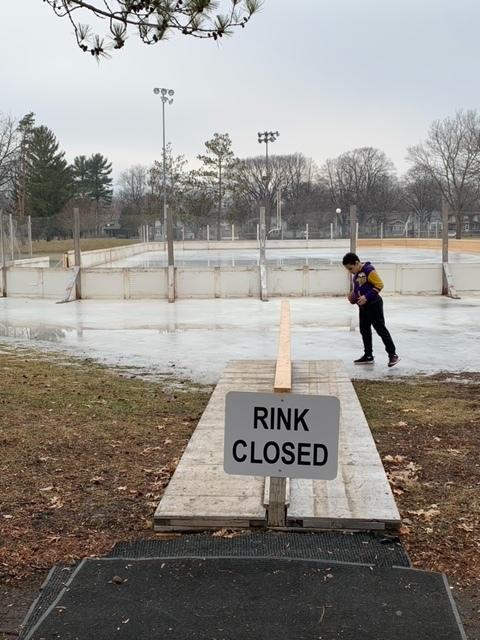

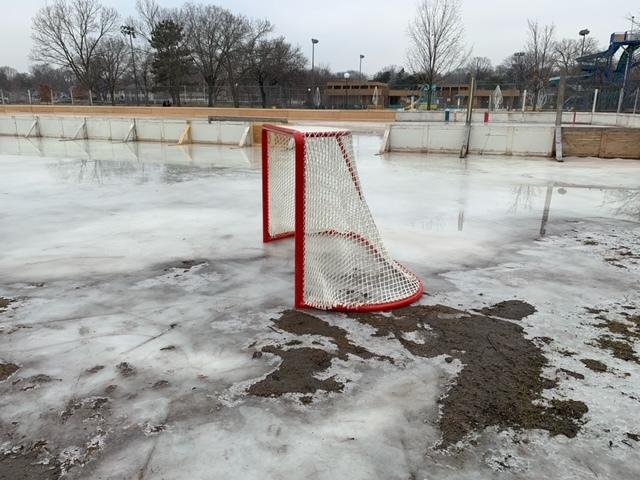
This winter, Minnesota's outdoor hockey players are seeing the impacts of climate change firsthand. (Courtesy of Christopher Williams)
Battling back
As the world’s climate rapidly changes, what is to become of hockey, which depends on ponds, lakes and outdoor rinks to feed not only its pro ranks but also its daily devotees?
Decades ago, pond hockey was played as far south as the suburbs of Washington D.C. Now, climate models predict that by 2050, it will be too warm to play outdoors on unrefrigerated ice in all of the eastern U.S. and much of southern Ontario and Quebec. By 2080, the same could be the case in western Canada’s Edmonton and Saskatoon.
Players, though, are not going down without a fight. (It’s hockey, after all. Fighting is almost built into the game.)
Backyard rink owners are collecting data on temperature and skateability, reporting a diminishing number of opportunities to get out on the ice. Players are raising funds and awareness, urging their fellow enthusiasts to get involved and vote for political candidates who make climate a priority.
Even the National Hockey League is investing: Its NHL Green program aims to cut carbon emissions, advise community rinks on how to do the same, and inspire fans to action.
In 2014, Helsinki, Finland-based amateur defenseman Steve Baynes and his teammates started what has become a small but growing international movement. “We see ourselves as basic hockey guys who are concerned about the future,” he says. Now, Save Pond Hockey has operations in five countries, including its newest offshoot, the U.S.
“Every pond hockey player will tell you pond hockey is one of the best things about life,” Baynes says. “We’re in this together to tackle climate change and help save this beautiful sport.”
Outdoors is the answer
When middle-school hockey coach Lauren Guite was growing up in South Portland, Maine, her father, who worked two jobs, woke up at 2 or 3 on winter mornings to water the ice in their family’s backyard rink. “That’s when the lowest temperature was,” she explains. “That’s when you can make the best ice.”
For many people living in cold climates, outdoor hockey isn’t just a game. It’s a way of life. “When you live in colder temperatures, you have fun in the winter. You don’t just hole up inside,” says Guite. She is one of the U.S.'s 2.3 million hockey players, according to the Sports & Fitness Industry Association.
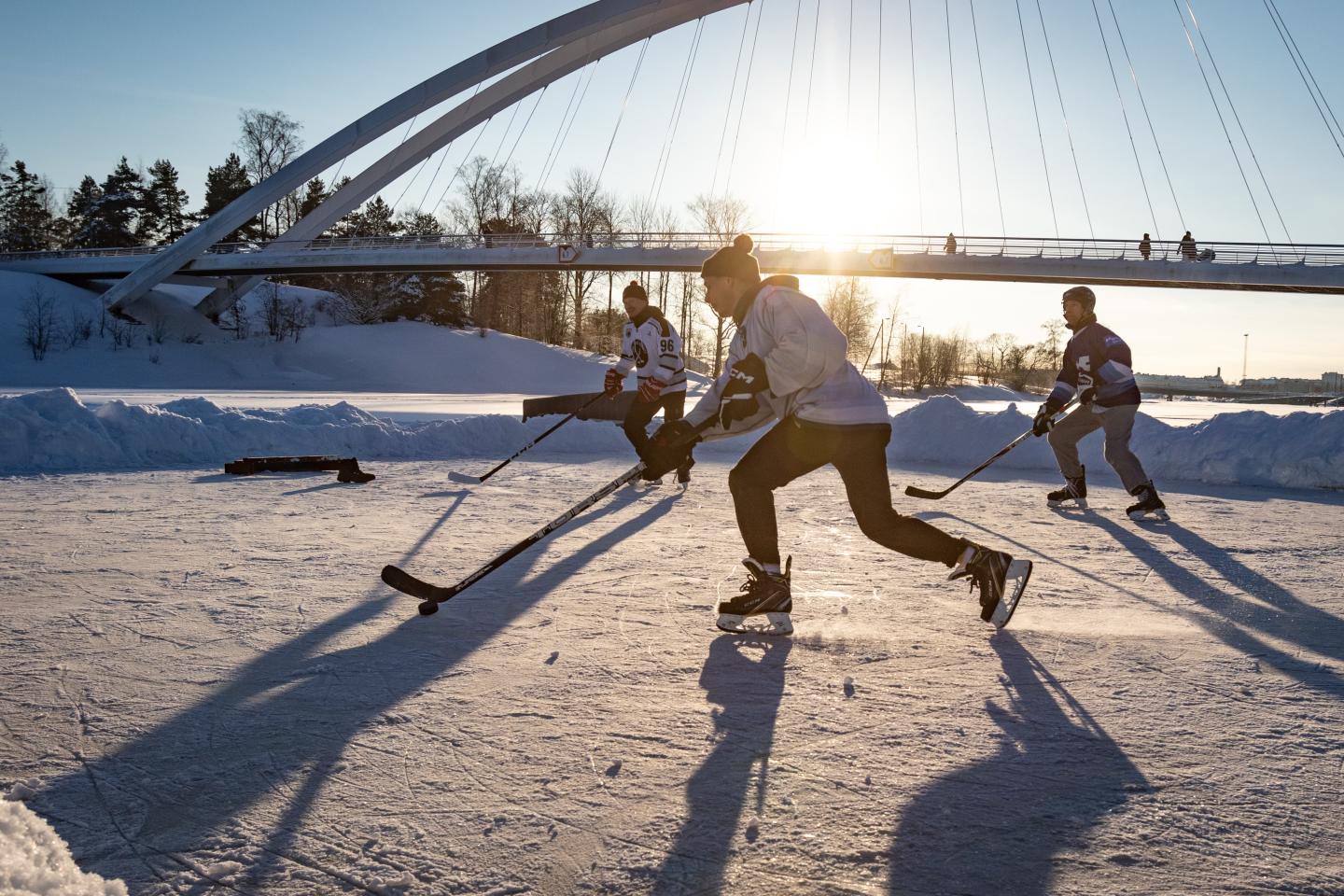
Pond hockey and hockey on unrefrigerated, outdoor rinks is where the vast majority of pro players got their start. “I basically spent my childhood playing outdoor hockey, from the time I woke up to the time I went to sleep,” the Washington Capitals’ Max Pacioretty has said.
Ponds and outdoor rinks don’t just make lovers of the sport, they make it accessible to kids and adults who might not otherwise be able to play.
“The ice time available to girls and boys in indoor rinks is not equal,” explains Guite. “Outdoor hockey gives you access.”
When, on a nearly nonexistent budget, Williams and a minister friend decided to start a hockey team for local at-risk, low-income kids, it was the free, outdoor rinks built on flooded playing fields in Minneapolis’ public parks that enabled the kids to learn the game. Despite hockey’s popularity in Minneapolis, none of the kids had ever played inside; indoor ice time is pricey.
“Now, we have about 60 kids, ages 6 to 18,” Williams says. They’ve created a community and a bond in the open, frigid air. “When we have outdoor ice, the coaches get their sticks, the refs get their sticks, and we all play even when things are supposed to be over.”
This year, finding ice to practice on has been tough. “The kids understand,” Williams says. “They’re ready to play and there’s no ice. They’ve heard of climate change and they understand that they’re seeing it in action.”
Data-driven
About a dozen years ago, before extreme weather got as extreme as it is now, Professor Robert McLeman, an environmental scientist at Wilfrid Laurier University in Waterloo, Ontario, and his colleague Professor Colin Robertson, were trying to find a way to make climate change relatable to large, Canadian audiences. Most folks will never see a polar bear in its natural habitat, they thought. So the loss of arctic ice may feel a little abstract and hard to care about. But weather and hockey are two things Canadians spend a lot of time discussing. “Outdoor skating is something they can actually identify with,” McLeman says.
In 2012, he and Robertson started RinkWatch, a project that has collaborated with owners of more than 1,600 outdoor rinks to collect data on daily temperatures and days when skating is possible. The project has used the data to develop a model that tracks historical trends and projects into the future.
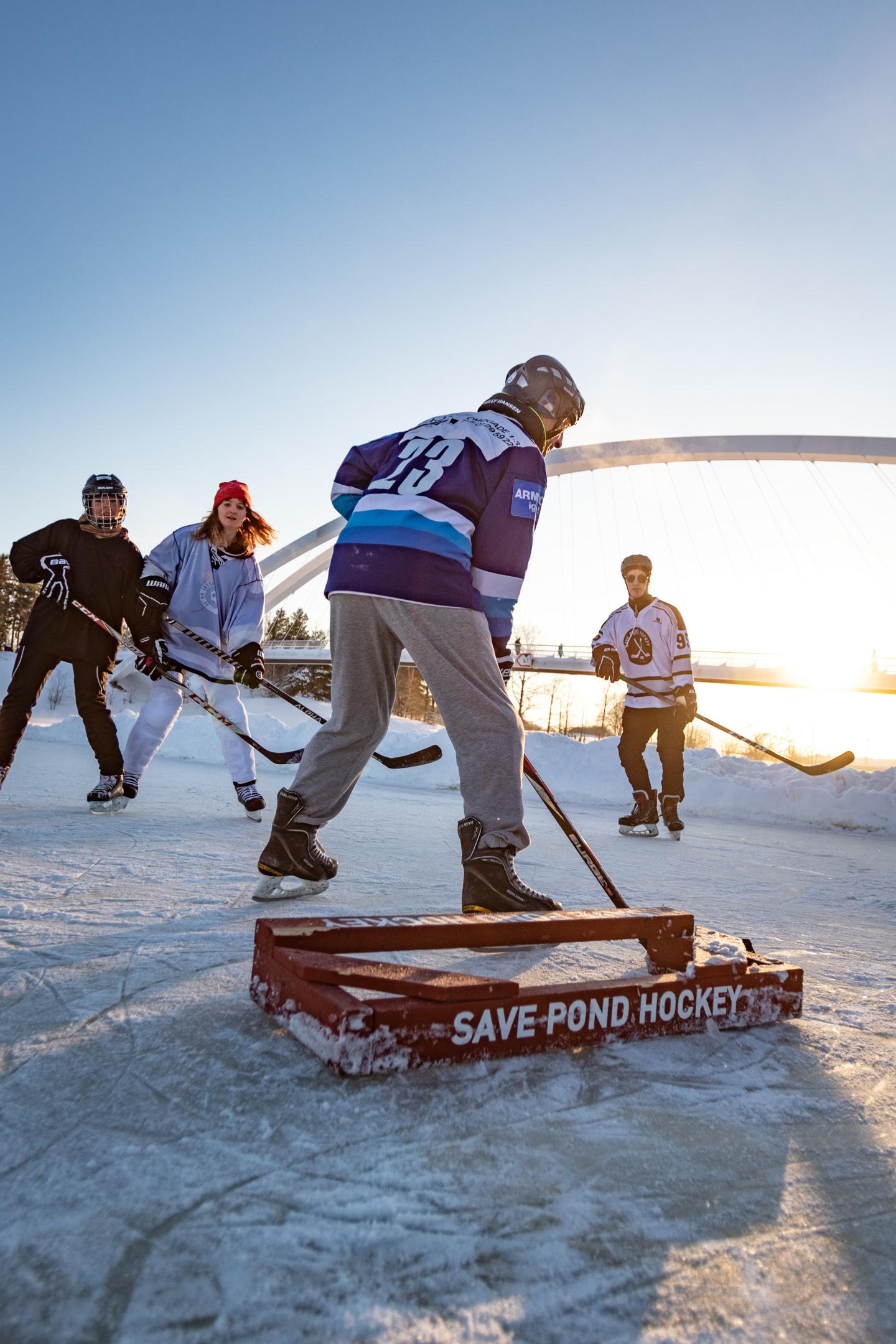
This summer, the team published a paper with a grim title: “Future prospects for backyard skating rinks look bleak in a warming climate.” Their findings should shake hockey players, fans and businesses to their cores.
(A 2015 report found that hockey is a $2.6 billion industry in Canada alone.)
“[M]any North Americans who build outdoor rinks every winter will, by mid-century, be living in areas where temperatures are only cold enough to do so occasionally,” McLeman’s team observed. For people who grew up playing hockey outdoors, its loss will have wide-ranging implications. “This has been a way of life for a lot of people,” McLeman says. “For many Canadians, this is part of the social fabric and it’s eroding.”
A growing number of hockey players have seen the writing on, well, the ice and are working hard to stop the melt.
Two-time Olympian and one-time Stanley Cup winner Mike Richter, who played 14 seasons as a goalie for the NHL’s New York Rangers, now runs a company that develops solar power and energy-efficiency projects.
For him, the motivation is simple. “Everyone wants clean air and water for their kids,” he says.
A lifelong environmentalist, Richter hopes athletes can help depoliticize the issue of climate change in the United States. “I think there can be far more agreement on all of these things than we see in the public square,” he says.
Since 2015, Save Pond Hockey has been engaging players on the issue and organizing outdoor fundraising tournaments in Finland and other parts of Europe, with proceeds benefiting local organizations working to stop climate change. “It’s all about fun climate action,” Baynes says, “which isn’t a term you hear a lot.”
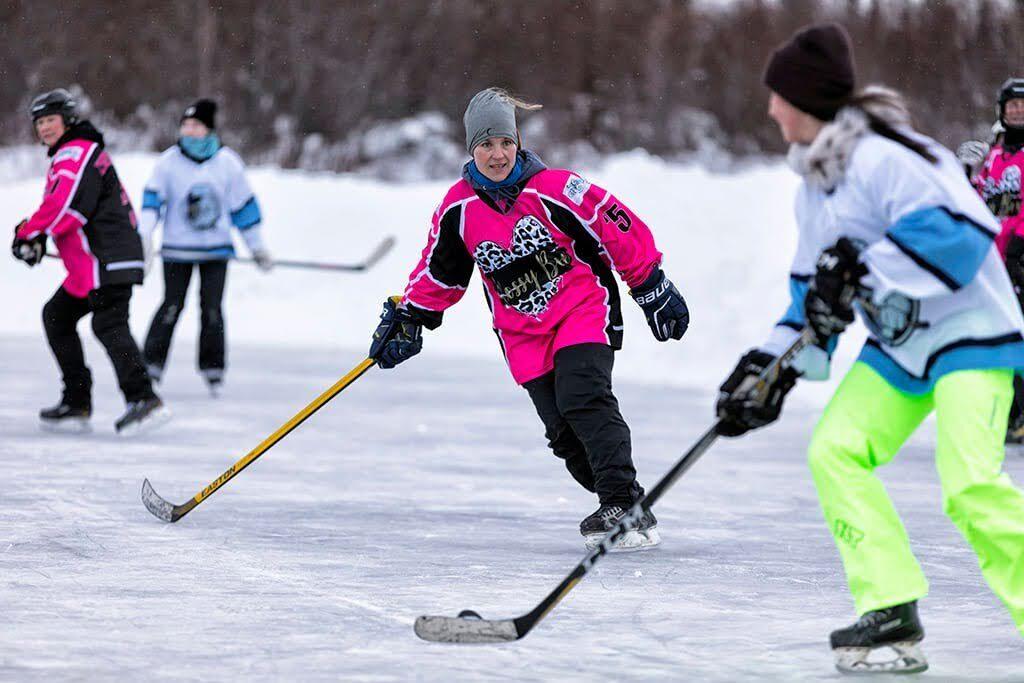
The group is now reaching out to organizations and tournaments, including the U.S. Pond Hockey Championships. Several players in the newly formed U.S.-Canadian Professional Women’s Hockey League have already signed up to get the word out.
Says architect and former college goalie Shelly Pottorf, from Save Pond Hockey USA: “My hope is that we can create a big enough field of caring to clean up hockey’s own climate footprint. We can convert indoor rinks to net-zero. We have the technology.” Here she includes all-electric, ice-smoothing Zambonis, along with ice-making systems that use energy-efficient heat pumps and renewable energy. “But we need the will power. How do you get people to protect the thing they love?”
Even the NHL is getting involved. Two of the 32 arenas where NHL teams play — Climate Pledge Arena in Seattle and UBS Arena in Long Island, New York — are LEED-certified, meaning they meet certain green construction and operations criteria. The league is tracking and reducing its energy use, cutting travel-related carbon emissions, and, through its NHL Greener Rinks Initiative, partnering with some of the 4,800 indoor community rinks in the U.S. and Canada to help them reduce carbon pollution from their facilities.
Winters in Minnesota are getting warmer
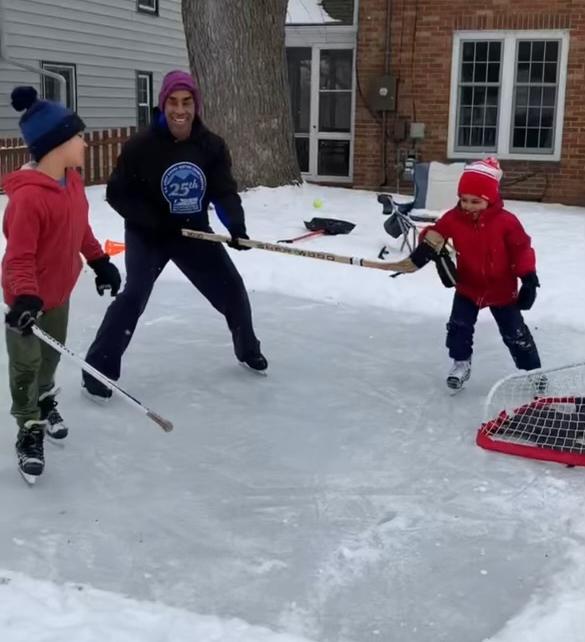
One hundred years ago, the average temperature across the state of Minnesota in January was 0.2 degrees Fahrenheit, according to the National Oceanic and Atmospheric Administration. The month before, December 1923, the temperature averaged 22.7 degrees.
This winter, the December average reached 30 degrees, meaning part of the time the state was below the temperature at which water turns into ice and part of the month it was significantly above; January numbers are still being calculated.
“I’m hoping it will freeze again,” Williams says. “Usually, we have my kids and all the neighbors’ kids come over. I was going to have my son’s hockey team over for a skating party.
“My two younger kids are 11 and almost 9,” he continues. “I’m constantly explaining to them the laws of physics. At 10 degrees, ice freezes much faster. At 30 degrees, it’s not going to freeze very fast at all.”


